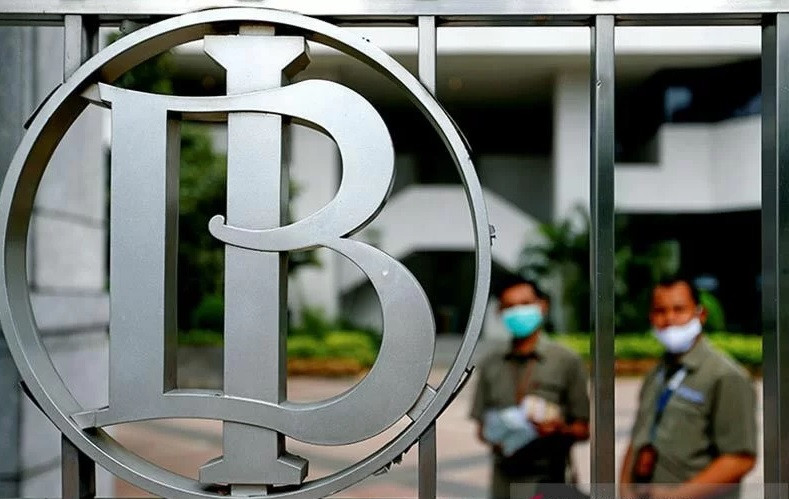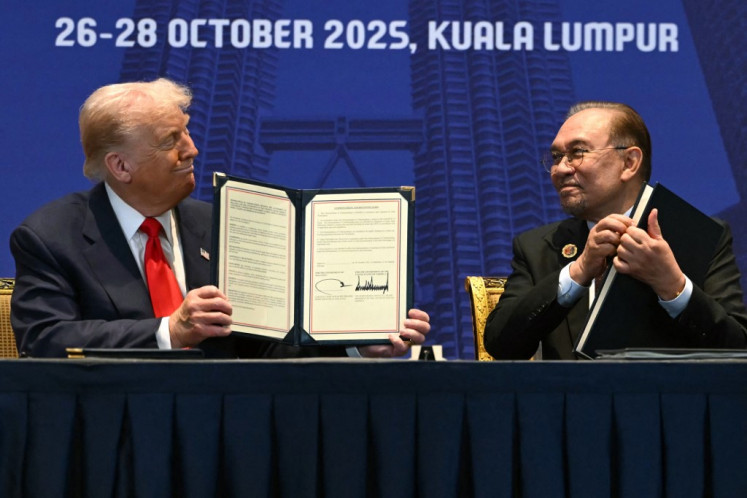Popular Reads
Top Results
Can't find what you're looking for?
View all search resultsPopular Reads
Top Results
Can't find what you're looking for?
View all search resultsBank Indonesia’s dilemma
But as regards the risk of capital outflows, Indonesia is not as vulnerable as it was during the 2013 tapering because foreign holdings of rupiah government bonds are now estimated at just 17 percent.
Change text size
Gift Premium Articles
to Anyone
W
hen Bank Indonesia (BI) decided to withhold its policy rate at 3.50 percent at its June 23 meeting even after the United States Federal Reserve hiked its rate by 75 basis points in mid-June, a number of analysts criticized the central bank’s too-dovish stance. Some analysts even questioned BI’s political independence as it appeared too supportive of the government’s objective of maintaining post-pandemic economic recovery.
BI instead controls liquidity by raising the rupiah reserve requirements for conventional commercial banks from 6 percent in June to 7.5 percent in July and 9 percent in September.
Then, Statistics Indonesia (BPS) announced on July 1 that the headline inflation rate in June was 0.61 percent on a month-to-month basis and 4.35 percent on a year-to-year basis. However, core inflation in June was 2.63 percent year-on-year and even declined on a month-to-month basis to 0.19 percent from 0.23 percent in May.
The question, then, is whether BI should start aggressive money tightening later this month after the 4.35 percent annual inflation in June. Are the fundamentals of the Indonesian economy strong enough to withstand the money-tightening trend around the world and the higher risks of imported inflation?
We think the country’s stable macroeconomic fundamentals still by and large provide the basis for a gradual and predictable adjustment to policy rates. But the downward pressures on the rupiah are causing stronger challenges to BI and the rupiah depreciation, which was about 4 percent in the first half of the year, and could escalate if the Fed implemented its plan for another rate hike this month.
Past experiences showed that an interest rate hike in the US would cause capital outflows and consequently push down the rupiah as foreign investors unloaded their rupiah bonds and increase the costs of servicing US dollar-denominated debts.
But as regards the risk of capital outflows, Indonesia is not as vulnerable as it was during the 2013 tapering because foreign holdings of rupiah government bonds now are estimated at just 17 percent, down from 40 percent in 2013 and 35 percent in 2018. Our foreign exchange reserves are enough for six months of imports and government short-term debt payments. Moreover, the commodity boom, especially in coal, palm oil and nickel, will continue to strengthen Indonesia’s trade balance and balance of payments for this year.
If the Fed's aggressive money tightening makes the interest rate differentials between Indonesia and the US much smaller, BI may have to raise its policy rate to curb capital outflows. But the consequences are that the higher rate would increase government debt service burdens, which for 2022 are already estimated at Rp 405 trillion (US$30 billion) or 15 percent of total budget spending, according to Bahana Securities.
We share BI's monetary policy stance — which is tied mainly to core inflation and not inflationary pressures associated with administered prices, transportation or volatile food commodities — because monetary policy can influence aggregate demand and anchor inflation expectations but not inflationary pressures caused by supply chain disruption or elevated energy prices.
Encouraging, though, is that worries about a global recession have started to press down the prices of food and the oil price seemed to have reached its peak.











